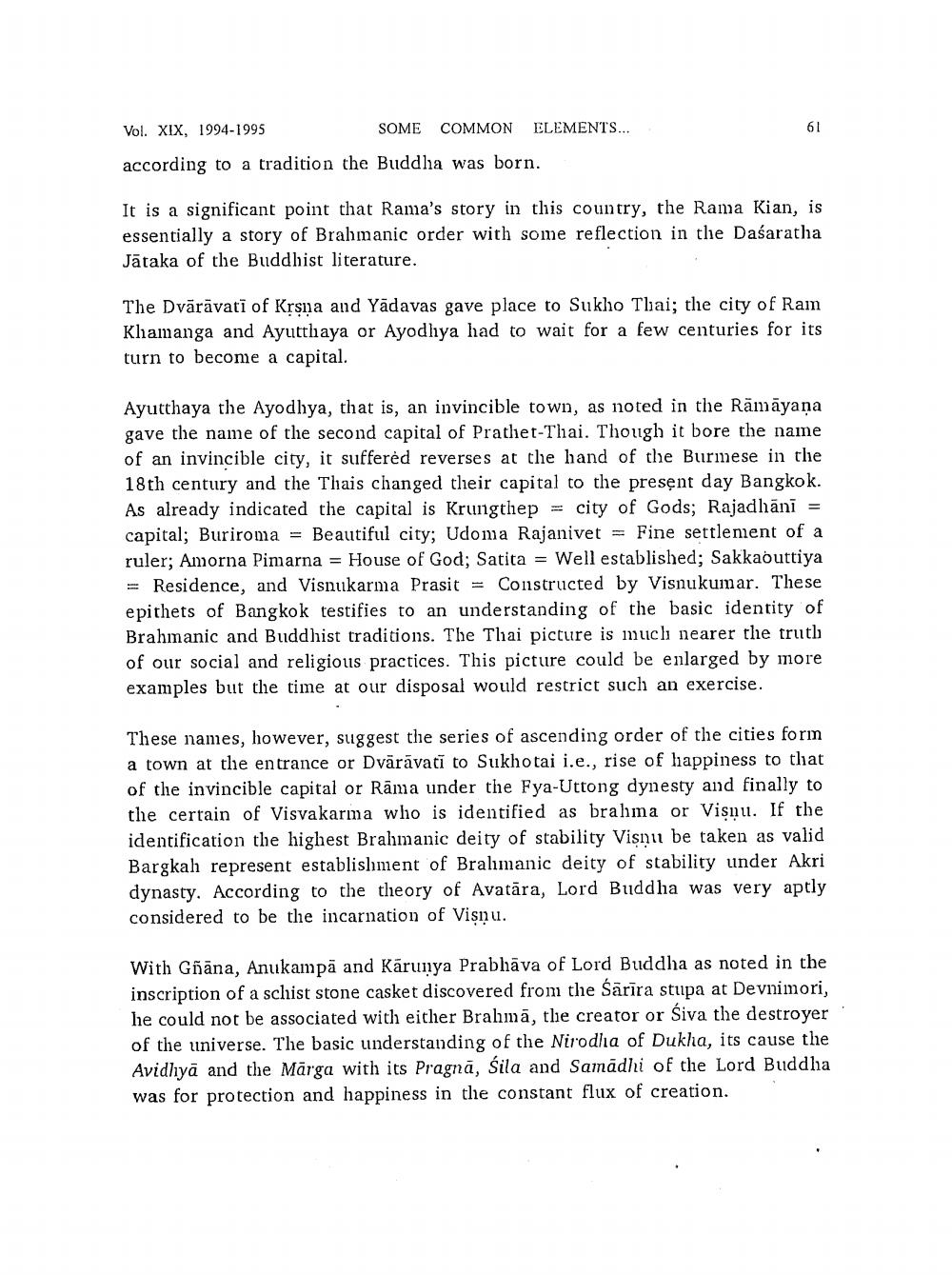________________
Vol. XIX, 1994-1995
SOME COMMON ELEMENTS... according to a tradition the Buddha was born.
It is a significant point that Rama's story in this country, the Rama Kian, is essentially a story of Brahmanic order with some reflection in the Daśaratha Jātaka of the Buddhist literature.
The Dvārāvati of Krsma and Yādavas gave place to Sukho Thai; the city of Ram Khamanga and Ayutthaya or Ayodhya had to wait for a few centuries for its turn to become a capital.
Ayutthaya the Ayodhya, that is, an invincible town, as noted in the Rāmāyana gave the name of the second capital of Prathet-Thai. Though it bore the name of an invincible city, it suffered reverses at the hand of the Burmese in the 18th century and the Thais changed their capital to the present day Bangkok. As already indicated the capital is Krungthep = city of Gods; Rajadhāni = capital; Buriroma = Beautiful city; Udoma Rajanivet = fine settlement of a ruler; Amorna Pimarna = House of God; Satita = Well established; Sakkaouttiya = Residence, and Visnukarma Prasit = Constructed by Visnukumar. These epithets of Bangkok testifies to an understanding of the basic identity of Brahmanic and Buddhist traditions. The Thai picture is much nearer the truth of our social and religious practices. This picture could be enlarged by more examples but the time at our disposal would restrict such an exercise.
These names, however, suggest the series of ascending order of the cities form a town at the entrance or Dvärāvatī to Sukhotai i.e., rise of liappiness to that of the invincible capital or Rāma under the Fya-Uttong dynesty and finally to the certain of Visvakarma who is identified as brahma or Visnu. If the identification the highest Brahmanic deity of stability Visnu be taken as valid Bargkah represent establishment of Bralımanic deity of stability under Akri dynasty. According to the theory of Avatāra, Lord Buddha was very aptly considered to be the incarnation of Visnu.
With Gñāna, Anukampā and Kärunya Prabhāva of Lord Buddha as noted in the inscription of a schist stone casket discovered from the Sārīra stupa at Devnimori, he could not be associated with either Brahma, the creator or Śiva the destroyer of the universe. The basic understanding of the Nirodha of Dukha, its cause the Avidhyā and the Mārga with its Pragnā, sila and Samadhi of the Lord Buddha was for protection and happiness in the constant flux of creation.




